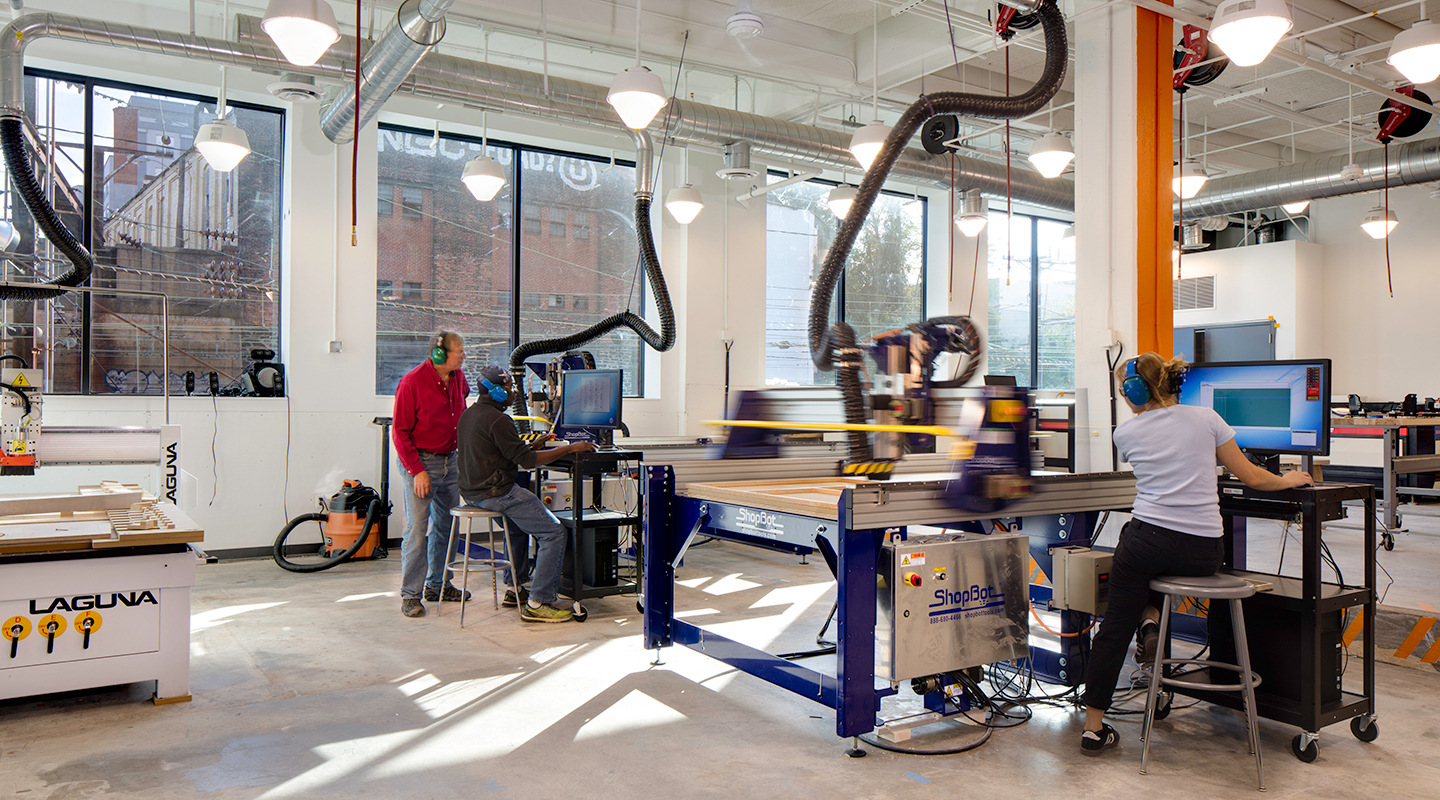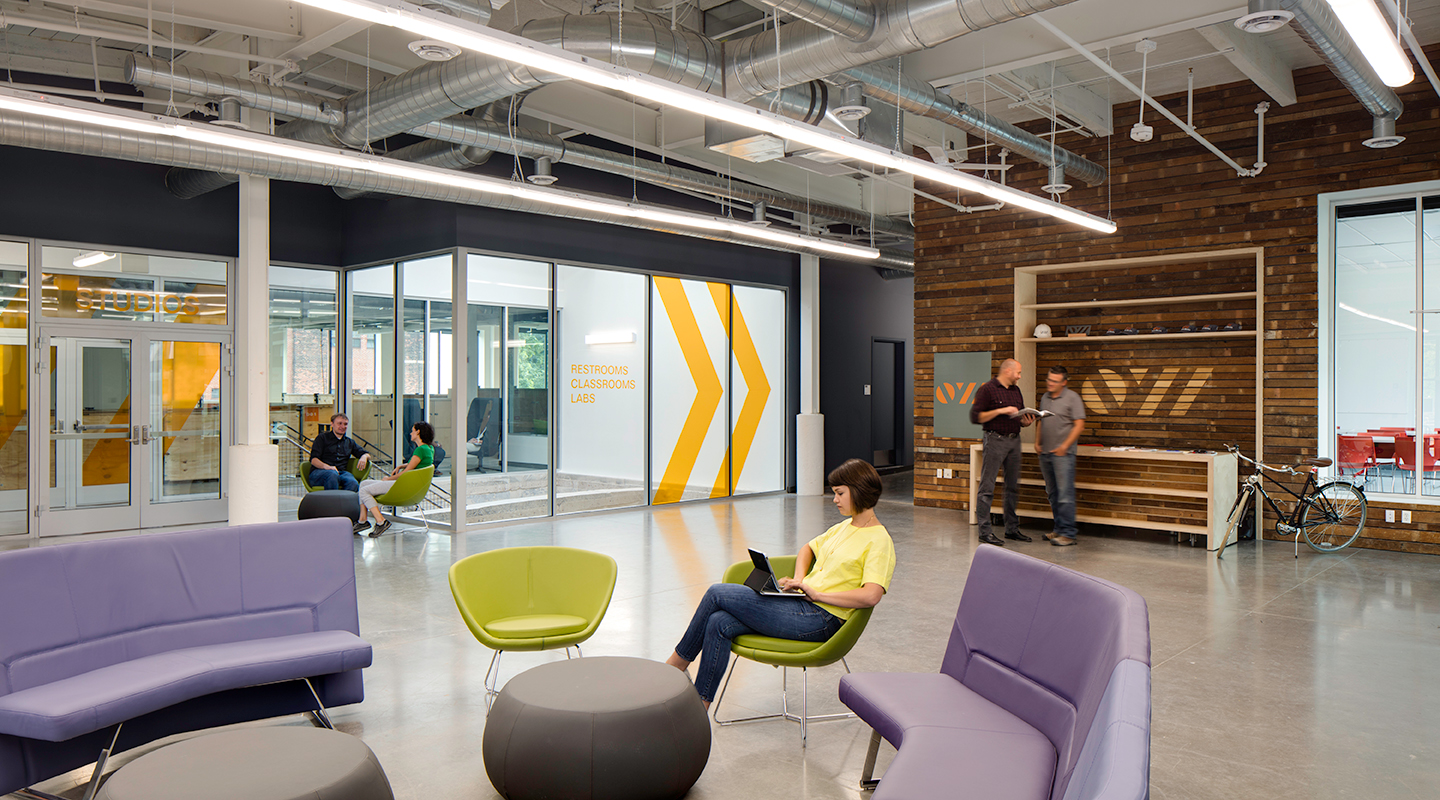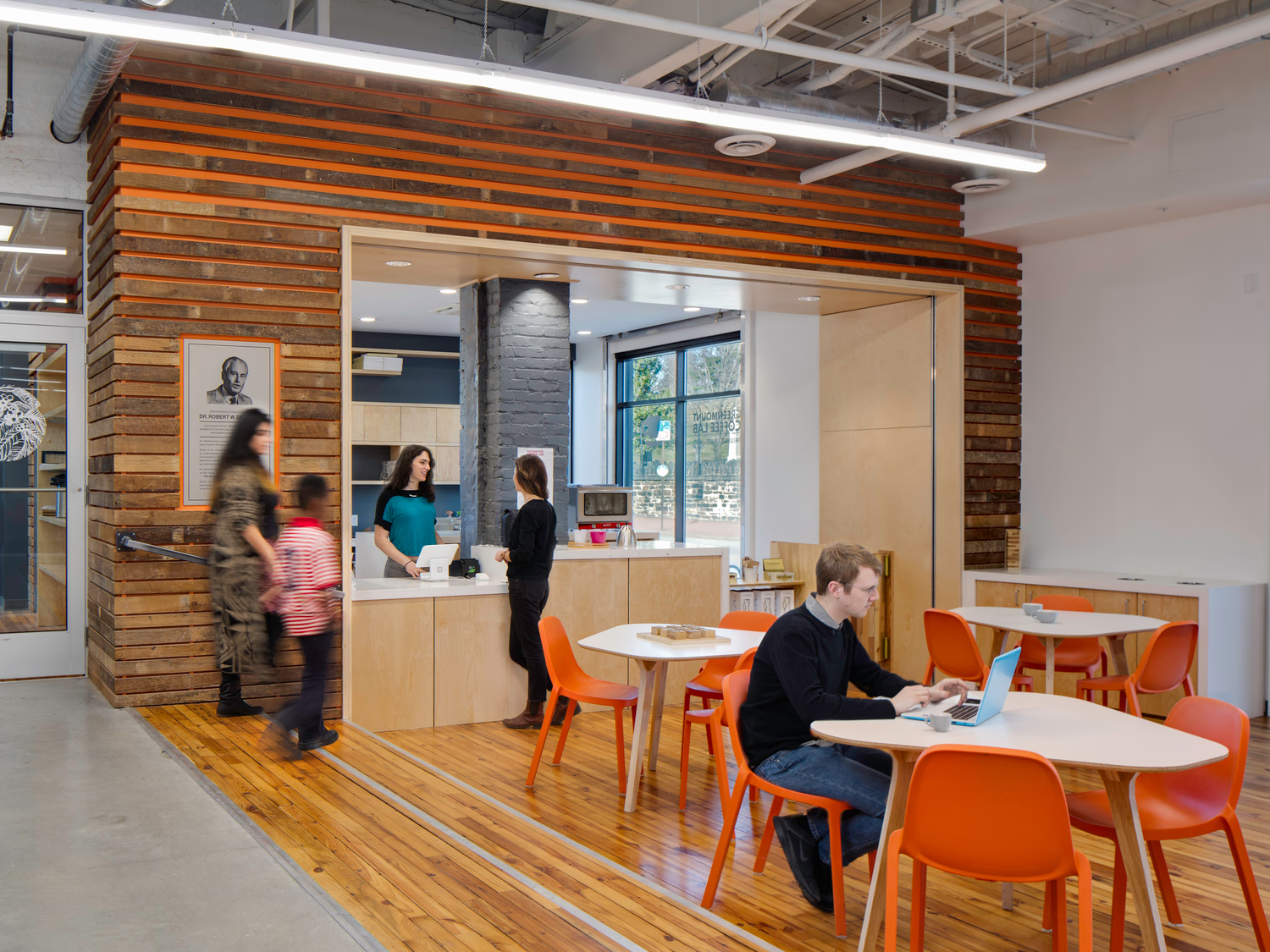


An Industrial Renaissance
Open Works
Open Works
A former industrial building is now a community-oriented makerspace. The formerly fenced-off, contaminated site and dilapidated building have become a community asset, supporting Open Works’ mission to make tools and technology accessible to everyone.
Our team worked with a nonprofit developer, local artists and artisans, and neighborhood residents to define a program that fulfills the community’s need for affordable studio space and small business support. Since its opening, Open Works has anchored a significant neighborhood transition while helping to renew Baltimore’s proud legacy as a center of innovation and manufacturing.
The real value of a makerspace isn't the tools or the technology or the space, it's the community and the connections that blossom there.

A Makerspace for All
Open Works members have access to a host of fabrication and machine shops for working with wood, metal, textiles, and electronics. A computer lab offers digital media resources and 3D printing, while micro studios provide a shared workspace for small businesses.

Welcoming the Neighborhood
Our design opens the site to the community by replacing a perimeter wall with outdoor public spaces. Streetside entrances and a lobby café invite foot traffic. We designed the parking lot to double as a festival venue, complete with a stage and a terrace that provides stadium seating.

Minimal Materials
Inspired by the maker-movement aesthetic and informed by sustainable design principles, we chose a minimal palette of durable, easily obtained materials: concrete, glass, and wood. Ductwork, piping, and electrical conduits remain exposed, eliminating the need for extra materials to conceal them.

Daylight
We added windows and skylights to bring daylight into the previously dim space. We used glazing for interior walls, including the stairwell enclosure, to help light reach deep into the building. Today over 90% of the building has access to daylight, including the lower level.

Embodied Carbon
By reusing the existing building and keeping the materials palette simple, the project used only a quarter of the embodied carbon of a comparable new building. This adaptation saved 675 metric tons of carbon – equivalent to 143 cars driving for a year!


